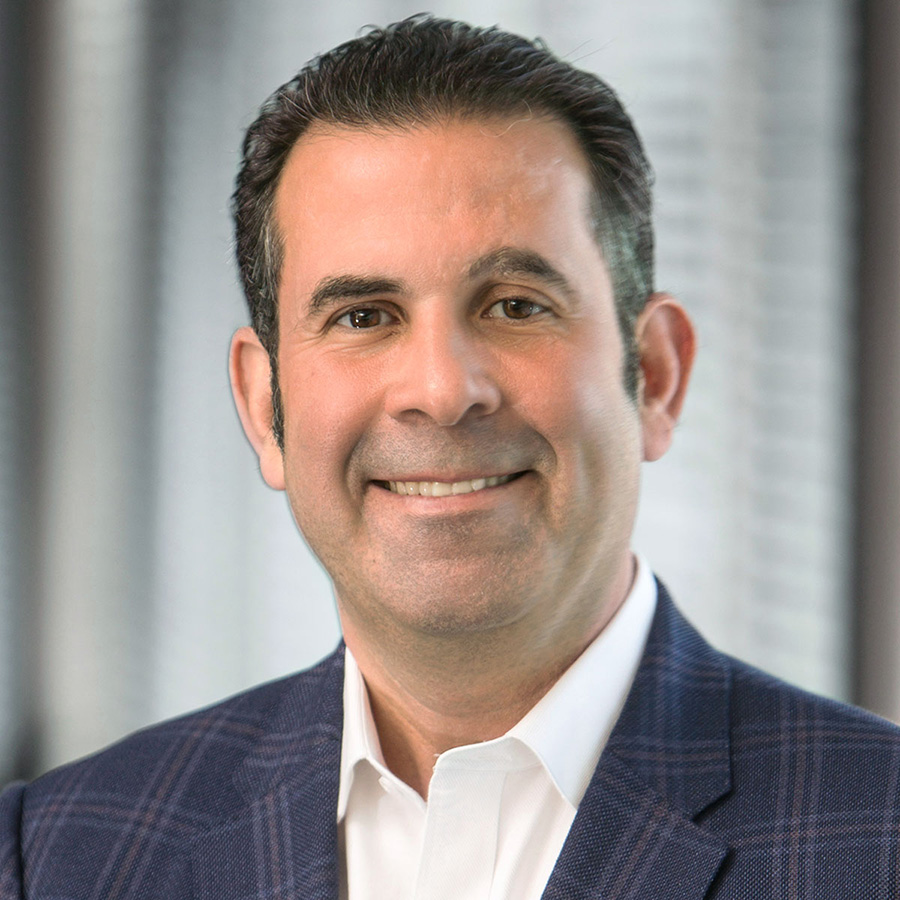For 26 years, Eduardo Conrado was one of the strategic minds at Motorola helping the mobile device company grow into a trusted manufacturer for first responders.
Conrado says that experience has helped him in health care as the chief strategy and innovation officer at Ascension, the large $25 billion, Catholic health system based in the Midwest. He worked at Motorola to help first responders deal with high-stress situations by delivering the information they need from devices in a way that wouldn’t cause harm. It’s not unlike what he’s been trying to do as Ascension’s chief strategy and innovation officer, in particular as the health system has dealt with the horrible COVID-19 pandemic over the past year.
“There’s a parallel between the two sides. You’re looking at insights. Simplification of information in high-stress situations. Making the digital solutions as user friendly as possible,” Conrado says. “When I came over and we started building out the digital team, a lot of people from tech came over. A lot of technologists see the mission in health care and the impact that tech can have on people, and it’s attractive to them.”
Conrado recently spoke to Health Evolution about how the health system is shifting its strategic priorities in response to COVID-19, why Ascension is interested in doubling its footprint in the ambulatory surgery center (ASCs) space, lessons he is using from the tech world and more.
How have Ascension’s strategic priorities shifted since COVID-19 hit?
The crisis served as a catalyst for accelerating some of our strategies. The use of virtual care. Pre-COVID, it was there but it was not used to scale. Because of the crisis, pretty much every physician was using virtual care. And this acceleration had a bunch of knockdown effects. For instance, we have an acceleration of remote patient monitoring and the blending of digital and clinical components.
And patient preferences are changing. Patients have started to prefer digital interactions vs. physical ones. If I’m going to schedule an appointment and go through the registration process, how can you make that digital in nature? Other industries have done it. If you think about the airline industry, I’m not sure how many people walk up to the check–in desk anymore vs. doing everything at home. I think you’re going to see those service orientations in health care.
There’s a growth in preference for at–home care. People are saying, “I’ll see the doctor, but I’ll do it at home.” That’s been the catalyst for us to re-look at our portfolio in terms of systems of care, both from the ambulatory, acute, post-acute and home sides. The integration of those pieces and the data foundation underneath it all enables the patient to flow through different environments.
Why is Ascension interested in doubling its ASC footprint?
We have a large footprint on the acute side. If you’re managing the total cost of care for the general population, surgery makes up 50-60 percent of that cost. What we’re looking at is over the next five years, there will be a shift from the acute side into the ambulatory side. In order for us to meet that demand, we need a larger ambulatory presence.
There is also some patient preference depending on the surgery they are going to have. We decided last year that we were going to put a special focus on ASCs. We created a strategic business unit for ASCs so we can aggregate and focus on a standard platform, technology and accelerate growth in that area. We have a VP and a team that is dedicated for that platform. We ended up shifting capital to that team so they could accelerate growth. We’re still growing organically, but we’re very active on the acquisition front. It’s a mix building our own where we have geographic coverage and growing through acquisitions.
How do ASCs align with Ascension’s goals around virtual care and alternative payment models?
When you think about virtual care, it starts on the front end with the physician enterprise. You might have a face-to-face encounter with your doctor and then the follow up is virtual. If you need surgery, you might go through an ASC. After the surgery, you’re using remote patient monitoring so the doctor can track outcomes. When you look at the continuum of care, virtual and remote play a big part of it. You may be doing recovery or PT at home. When the doctor might be tracking patient reported outcomes, that’s another flavor of remote patient monitoring. You’re going to see all this as part of the continuum of care.
Read more: As investments into ASCs soar, health care leaders must navigate a new landscape
What challenges come with expanding ASC operations?
Part of it is creating a standard platform that we can replicate. Standardizing processes, the tech, the patient experience. That’s extremely important. The challenge is how fast we can go on the implementation side. That’s something we’re currently gauging. You have the pressure of going faster vs. the ability of the team to implement properly. We’re trying to balance that.











